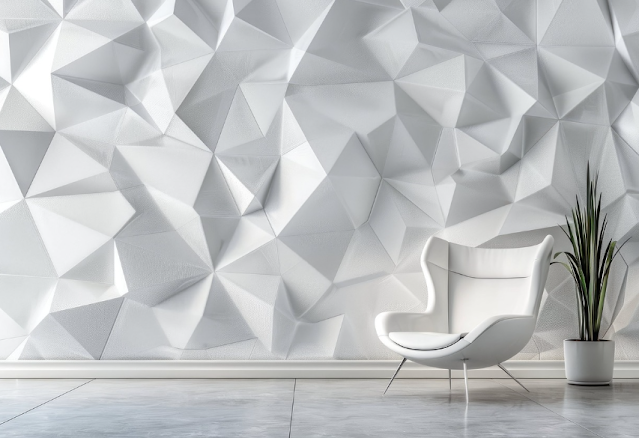Textured wall panels are a popular choice in interior design, offering both aesthetic appeal and practical benefits.
Whether used in homes, offices, or commercial spaces, these panels bring a new level of depth, sophistication, and style to any wall surface. This article explores the key aspects of textured wall panels, from types and materials to installation tips and advantages.
What Are Textured Wall Panels?
Textured wall panels are decorative surfaces designed to add a tactile, three-dimensional effect to walls. Unlike traditional flat panels, textured versions feature raised designs, patterns, and contours that create a more dynamic appearance.
They come in a variety of styles, from subtle grooves to bold, geometric shapes, and can complement many interior design themes, from modern minimalist to rustic chic.
Types of Textured Wall Panels
Wood Panels Wood is a timeless material for creating textured walls. It brings warmth and a natural feel to any space. Options include reclaimed wood for a rustic vibe, smooth wood panels for a modern look, or carved wood with intricate patterns. Wood panels are versatile and can be stained, painted, or left unfinished for a raw, organic look.
PVC Panels PVC wall panels are lightweight, durable, and moisture-resistant, making them a great choice for high-humidity areas like bathrooms and kitchens. These panels are often available in a variety of patterns, from stone textures to wave-like designs, and are easy to clean and maintain.
3D Foam Panels Foam panels are a practical choice for soundproofing while adding texture. They’re lightweight, easy to install, and available in various designs. Often used in home theaters or studios, foam panels can enhance acoustics while elevating the room’s design.
Metal Panels Metal panels, such as aluminum or stainless steel, are ideal for industrial or modern spaces. These panels offer a sleek, shiny finish that catches the eye. Metal textured panels are often used as accent walls, adding a contemporary feel.
Gypsum and Plaster Panels Gypsum and plaster are excellent choices for creating elaborate textures. These panels can be molded into intricate designs, adding elegance and depth to a room. They’re ideal for classical or luxurious interiors but can also be shaped into modern patterns.
Concrete Panels Concrete panels offer a rugged, industrial look that’s highly popular in urban interiors. These panels can be smooth or come with a raw, unfinished texture. They’re perfect for adding an edgy vibe to loft-style spaces.
Benefits of Textured Wall Panels
Enhanced Aesthetic Appeal: Textured panels can transform a bland wall into a striking focal point, adding personality and style.
Sound Insulation: Many textured wall panels, particularly foam and wood types, help absorb sound, making them a practical choice for rooms where acoustics matter.
Durability and Maintenance: Most textured panels are designed for longevity. Materials like PVC and metal are easy to clean and maintain, while wood and gypsum may require occasional upkeep.
Easy Installation: Textured panels are often simple to install, even for DIY enthusiasts. Many panels come with adhesive backing, reducing the need for nails or screws.
Tips for Choosing and Installing Textured Wall Panels
Assess the Room’s Purpose: Each material has its strengths. For example, PVC is best for humid areas, while wood suits living rooms and bedrooms where warmth is desired.
Choose Complementary Textures and Colors: Opt for panel textures that match the room’s style. Subtle textures can work well in minimalist spaces, while bold patterns are great for accent walls.
Consider Lighting: Lighting can impact how the textures appear. For instance, side lighting can accentuate shadows and give the wall a more dramatic effect.
Installation Techniques: While some panels require professional installation, many are DIY-friendly. Peel-and-stick options are especially convenient, but ensure the surface is clean and dry for better adhesion.
Maintenance: Follow the specific care instructions for each panel type. Some panels, like wood, may require occasional sealing or staining, while PVC and metal only need occasional wiping.
Why Choose Textured Wall Panels?
Textured wall panels offer a quick, affordable, and effective way to revamp a space without undergoing a full renovation.
Their versatility and range of styles mean they can be customized to fit any aesthetic, from modern and industrial to classic and cozy. Whether you’re looking to make a statement with a bold accent wall or add subtle texture to a room, textured wall panels are a practical choice that adds value and appeal to any interior.
Final Thoughts
Textured wall panels have revolutionized the way people approach interior design. With so many styles, materials, and patterns available, there’s a textured panel solution for every taste and budget.


EmoticonEmoticon